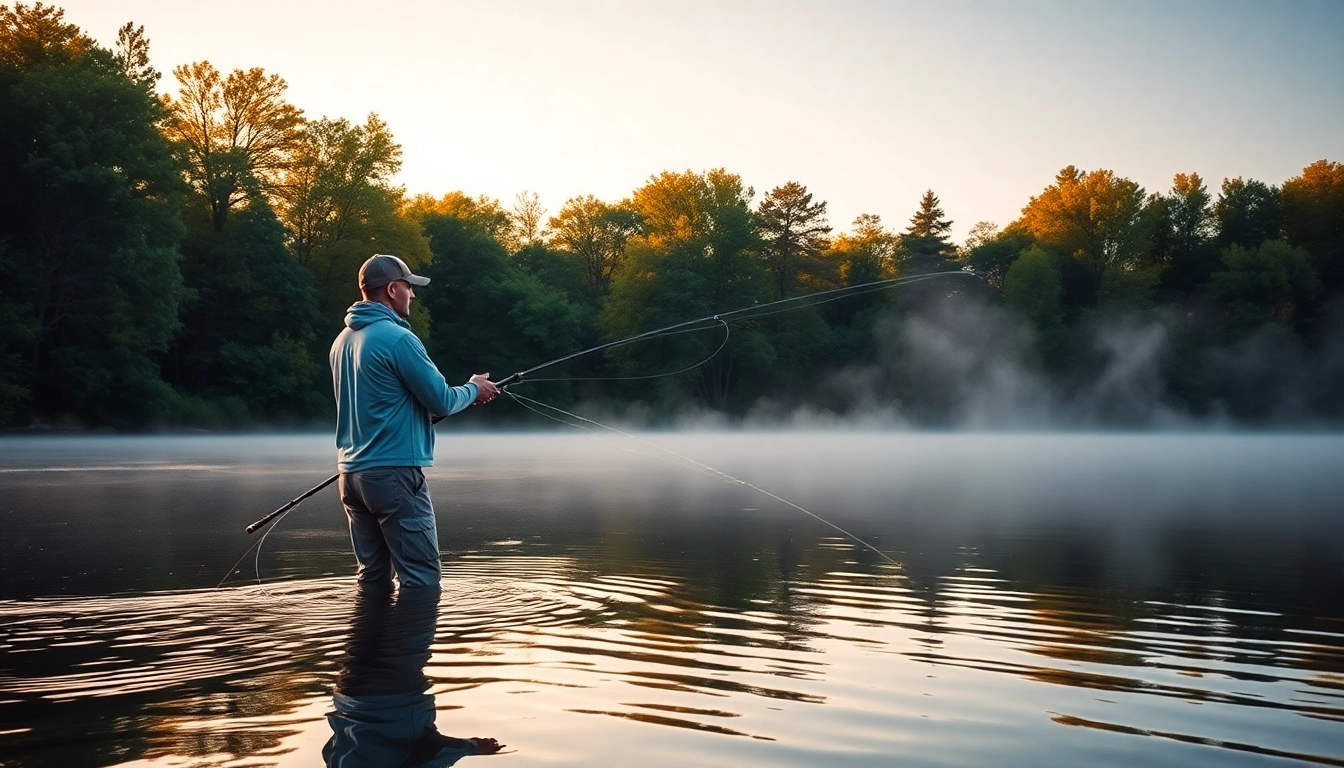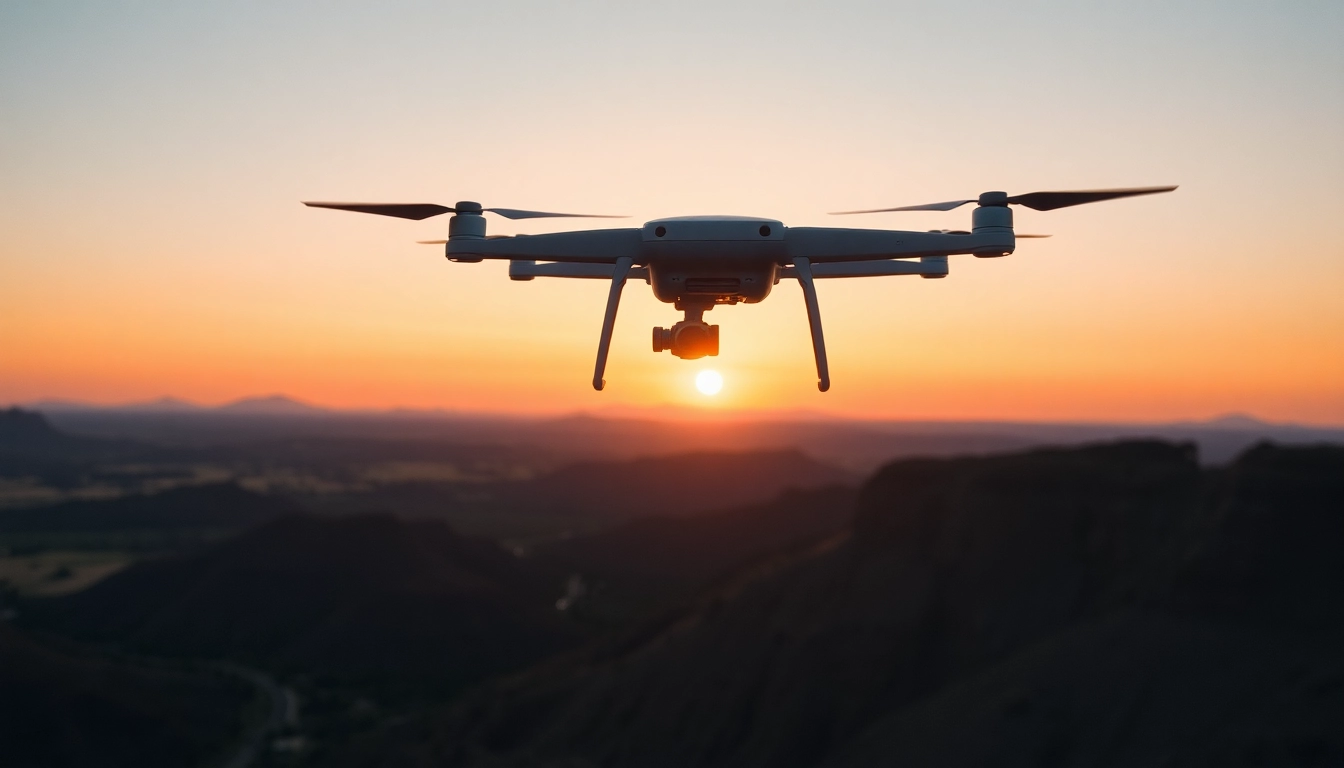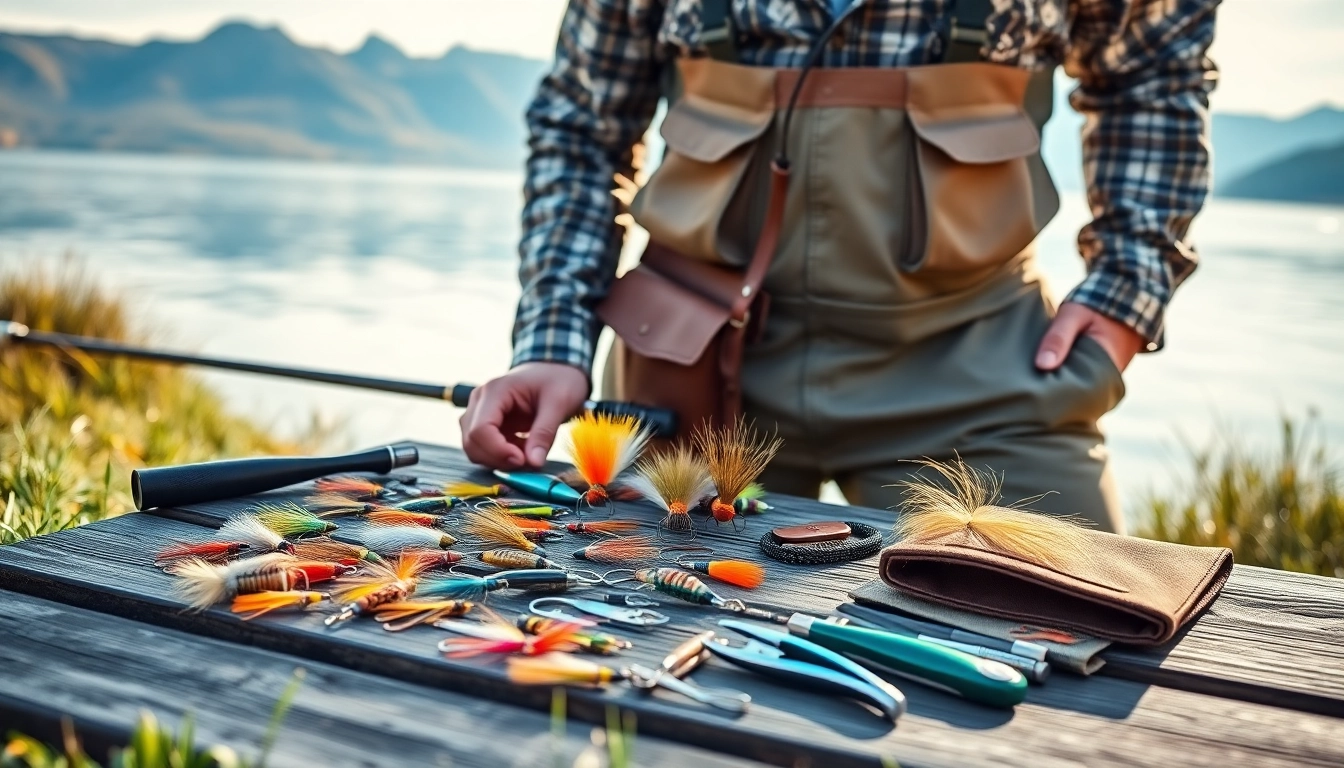Understanding the Basics of Fly Fishing for Bass
Embarking on the adventure of fly fishing for bass opens up a world of excitement and skill. This technique merges artistry with angling, allowing enthusiasts to effectively target one of the most thrilling freshwater species: the bass. Whether you’re a novice looking to cast your first line or a seasoned angler aiming to enhance your strategies, understanding the fundamentals of fly fishing for bass is essential.
What is Fly Fishing for Bass?
Fly fishing for bass involves using lightweight artificial flies to entice these fish, instead of traditional lures or bait. This method is especially effective for species like largemouth and smallmouth bass, who thrive in varying water conditions. Utilizing a specialized rod, reel, line, and casting techniques, anglers mimic the natural prey of bass, making it a visually and tactically engaging pursuit.
Key Equipment Needed for Success
To successfully engage in fly fishing for bass, there are specific pieces of equipment that should be prioritized:
- Fly Rod and Reel: A medium-weight rod (typically 6 or 7 weight) is recommended for bass, paired with a reel that can manage a robust line.
- Fly Line: A weight-forward floating line allows for easier casting and helps keep your fly at the right depth.
- Leader and Tippet: Use a clear monofilament or fluorocarbon leader that is 9-12 feet long, ensuring a delicate presentation.
- Flies: Various patterns will be discussed later, but having an assortment tailored for bass is crucial.
- Accessories: Include a landing net, forceps, and a fly box to keep your equipment organized.
Choosing the Right Location and Time
The success of your fly fishing venture hinges not only on your technique but also on your location and timing. Bass are most active early in the morning and late in the evening; hence, planning sessions around these times can be beneficial. Look for areas with structure, such as fallen trees, rocks, or vegetation, which provide cover for bass. Additionally, understanding local weather patterns can help optimize your fishing opportunities.
Essential Techniques to Master Fly Fishing for Bass
Perfecting Your Casting Technique
Accomplished fly fishing hinges on mastery of casting techniques. The overhead cast is the most common, involving a backcast followed by a forward cast. Pay attention to the tailing loop, which can hinder casting distance and accuracy. Practicing in open areas can improve timing and precision, critical aspects for placing your fly accurately in front of the bass. Incorporate roll casts when working in confined spaces or with obstacles nearby.
Effective Retrieval Methods Explained
Retrieval techniques play a significant role in enticing a bass to strike your fly. Different retrieves can be employed based on water temperature, weather conditions, and the nature of the fly being used. Common retrieves include:
- Strip Retrieve: This is effective for streamers; pull back the line in intervals, imitating an injured fish.
- Pulse Retrieve: Short, quick pulls can simulate a distressed bait fish, arousing the bass’s predatory instincts.
- Dead Drift: Allowing a fly to drift naturally with the current is essential, especially when using nymphs or dry flies.
Reading Water and Identifying Bass Habitats
A keen understanding of water features is vital for locating bass. Bass often congregate near structures like submerged rocks, ledges, and weed beds that provide both protection and feeding opportunities. Additionally, observe water temperature and clarity, as they influence bass behavior. Shallow bays and creek mouths can be hotspots, especially during spawning season in the spring.
Fly Patterns that Attract Bass
Choosing the Right Flies for Different Conditions
When it comes to fly selection, understanding the local ecosystem is crucial. Factors such as seasonality, water clarity, and baitfish species will dictate the most effective fly patterns. Commonly successful fly patterns for bass include:
- Streamers: Patterns like Clouser Minnows or Woolly Buggers are excellent for imitating baitfish.
- Poppers: Ideal for surface action, especially in warmer months; they create enticing surface disturbances.
- Deer Hair Flies: Great for imitating terrestrial insects or frogs, capturing bass’s attention effectively.
How to Tie Popular Bass Flies
Learning to tie your own flies can enhance your angling experience. For example, to tie a basic Clouser Minnow, you will need thread, a hook, dumbbell eyes, bucktail, and flash. Follow these steps:
- Secure the hook in a vice and attach the thread at the hook eye.
- Attach the dumbbell eyes for weight near the hook bend.
- Layer the bucktail behind the eyes to create a tail, followed by the flash on either side.
- Wrap the thread to secure everything and finish by creating a knot.
Using Size and Color to Your Advantage
Bass can be particular about color and size, particularly in varying water conditions. In clear water, smaller, natural colored flies may be more effective, while murkier water often calls for larger, brighter patterns. Therefore, adjusting your fly selection based on visibility and bass behavior can yield better results.
Common Mistakes in Fly Fishing for Bass
Understanding the Importance of Stealth
One common mistake anglers make is neglecting the importance of stealth. Bass are skittish creatures that can easily be spooked by sudden movements or loud noises. Ensure that you approach fishing spots quietly and cast from a distance where possible, allowing you to avoid disturbing the area.
Avoiding Overcasting: When Less is More
Striking the right balance in casting is vital in fly fishing. New anglers often feel compelled to cast as far as possible, which can lead to inaccurate placement. Remember, accuracy is more important than distance. Focus on precision placement of your fly in the optimal spots rather than trying to reach distant water.
Recognizing Hooking and Landing Errors
Once you feel a strike, the type of hook set can make or break your success. A quick, powerful upward motion is crucial; overly gentle sets can lead to missed opportunities. Additionally, employing proper landing techniques, such as keeping tension on the line while reeling in, will improve your chances of successfully landing bass.
Advanced Strategies for Serious Anglers
Seasonal Techniques for Fly Fishing for Bass
Seasonality heavily influences bass behavior and feeding patterns, necessitating an adjustment in fishing techniques:
- Spring: As bass move into shallow spawning areas, use lighter flies to mimic smaller baitfish.
- Summer: Focus on early mornings and late evenings when bass are more actively feeding, using surface flies.
- Autumn: Bass fatten up for winter; larger streamers imitating baitfish work well.
- Winter: Techniques slow down; focus on deeper waters with slower retrieves using nymphs or streamers.
Adapting to Changing Water Conditions
The ability to adapt quickly to fluctuating water conditions can make a significant difference in your fishing success. After a rainstorm, for instance, water clarity can change dramatically. Understanding how this affects bass behavior will inform your choice of fly color, pattern, and retrieval technique.
Using Technology to Enhance Your Fishing Game
In the modern era of fishing, technology can provide serious anglers with an edge. Utilizing apps to track water temperature, weather, and previous catches can optimize your fishing strategy. Additionally, considering fish finders or depth finders can help you locate underwater features that attract bass.



